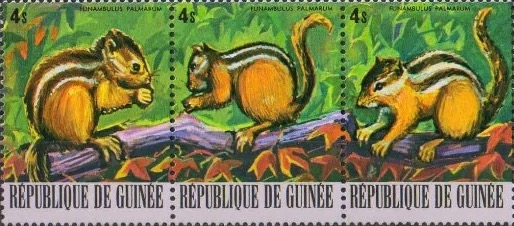
This is one of the interesting short stories from Ramayana for children.
After the abduction of Sita, Lord Rama along with this army of monkey and bears, started making a bridge of stones over the sea that would lead them to Lanka. He was very happy to see the passion, dedication and energy levels of his army towards the construction of the bridge.
A little squirrel was picking up pebbles in her mouth and putting them near the boulders. Sometimes, it rolled in the beach sand and then ran to the end of the bridge to shake off the sand from its back (chanting Lord Rama’s name all along). She did this repeatedly and with great enthusiasm.
Just then, a monkey noticed her and started making fun of her. He told her to stay away lest a boulder crush her. Hearing this, everyone started making fun of her. The squirrel was in tears. Lord Rama was noticing all this from a distance.
Upset, the squirrel went to Lord Rama and complained about everyone to him. Lord Rama then demonstrated to the army how the pebble thrown by the squirrel has worked as the connector between two boulders. Even her contribution is as valuable as that of the other members of the army.
Acknowledging the squirrel’s effort, Lord Rama stroked the squirrel’s back. The stroking left the marks of his finger on the body of the squirrel. Since then, squirrels in India have carried white stripes on their body.
Source: momjunction.com
Did you know?

The Indian palm squirrel or three-striped palm squirrel (Funambulus palmarum) is found naturally in India (south of the Vindhyas) and Sri Lanka. It has a bushy tail slightly shorter than its body. The back is a grizzled, grey-brown colour with three conspicuous white stripes which run from head to tail. Juvenile squirrels have significantly lighter coloration, which gets progressively darker as they age.
Adam’s Bridge, also known as Rama Setu is a chain of limestone shoals, between Pamban Island, also known as Rameswaram Island, off the south-eastern coast of Tamil Nadu, India, and Mannar Island, off the north-western coast of Sri Lanka. Geological evidence suggests that this bridge is a former land connection between India and Sri Lanka
The bridge is 30 km long and separates the Gulf of Mannar (south-west) from the Palk Bay (northeast). Some of the sandbanks are dry and the sea in the area is very shallow, being only 1 to 10 metres deep in places, which hinders navigation. It was reportedly passable on foot up to the 15th century until storms deepened the channel: temple records seem to say that Adam’s Bridge was completely above sea level until it broke in a cyclone in 1480.
